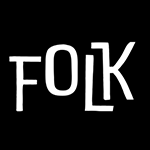"Finding Home" is now available on Amazon.
Unlocking Creativity: The Power of Flow
The concept of “flow” in relation to creative activity refers to a mental state where individuals are fully immersed in an activity, experiencing a sense of energized focus, full involvement, and enjoyment in the process. This state of flow is often described as being “in the zone,” where time seems to fly by, and the individual feels both challenged and competent. The concept was popularized by psychologist Mihaly Csikszentmihalyi, who identified flow as a key component of happiness and creativity.
Key Characteristics of Flow
Intense Concentration:
- Individuals in a state of flow experience intense concentration and focus on the task at hand.
- Distractions fade away, and attention is completely absorbed by the activity.
Merging of Action and Awareness:
- There is a seamless integration of action and awareness, where individuals feel a sense of unity with their activity.
- The distinction between self and activity diminishes, creating a sense of being “in the moment.”
Loss of Self-Consciousness:
- Self-consciousness and the inner critic are silenced, allowing for uninhibited creative expression.
- Concerns about others’ opinions or fear of failure are minimized.
Altered Sense of Time:
- Time perception is altered, with hours feeling like minutes or vice versa.
- The focus is entirely on the present moment, leading to a sense of timelessness.
Intrinsic Motivation:
- The activity itself is intrinsically rewarding, providing enjoyment and satisfaction.
- Motivation comes from the experience of the activity rather than external rewards or recognition.
Clear Goals and Immediate Feedback:
- Individuals have clear goals or intentions guiding their actions.
- Feedback on progress is immediate, whether from the task itself or from an internal sense of achievement.
Balance Between Challenge and Skill:
- Flow occurs when there is a balance between the challenge of the activity and the individual’s skill level.
- The task is neither too easy to cause boredom nor too difficult to cause anxiety.
Flow and Creativity
Flow is particularly relevant to creative activities because it fosters an optimal environment for creativity to flourish. Here’s how flow enhances creative pursuits:
Enhanced Focus:
- Flow allows individuals to dive deeply into their creative work without distractions, leading to higher levels of concentration and productivity.
Uninhibited Expression:
- The loss of self-consciousness and fear of judgment in flow states encourages risk-taking and experimentation, which are essential for creative breakthroughs.
Problem-Solving and Innovation:
- The clear goals and immediate feedback in flow help individuals navigate creative challenges effectively, leading to innovative solutions and ideas.
Joy and Satisfaction:
- The intrinsic motivation and enjoyment derived from flow make creative activities more rewarding, fostering a positive feedback loop that encourages continued creative engagement.
Skill Development:
- The balance between challenge and skill in flow states promotes continuous learning and skill enhancement, driving creative growth over time.
Achieving Flow in Creative Activities
To achieve flow in creative activities, consider the following strategies:
Set Clear Goals:
- Define what you aim to achieve in your creative session to provide direction and focus.
Create an Optimal Environment:
- Minimize distractions and create a space conducive to concentration and immersion in your creative work.
Match Challenge with Skill:
- Choose tasks that are appropriately challenging relative to your skill level to maintain engagement and prevent boredom or frustration.
Establish Routines:
- Develop routines or rituals that signal the start of creative work, helping to transition into a flow state more easily.
Practice Mindfulness:
- Engage in mindfulness practices to enhance present-moment awareness and reduce distractions from wandering thoughts.
Take Breaks:
- Allow for periodic breaks to rest and recharge, which can help maintain focus and energy levels during creative sessions.
Conclusion
The concept of flow is a powerful tool for enhancing creativity and overall well-being. By understanding and applying the principles of flow, individuals can achieve deeper levels of engagement, satisfaction, and productivity in their creative pursuits. Embracing flow not only makes creative activities more enjoyable but also fosters an environment where innovation and personal growth can thrive.
Allow this Muse to inspire your creative journey.
Source: OpenAI. (2024). ChatGPT (4o) [Large language model]. https://chatgpt.com
